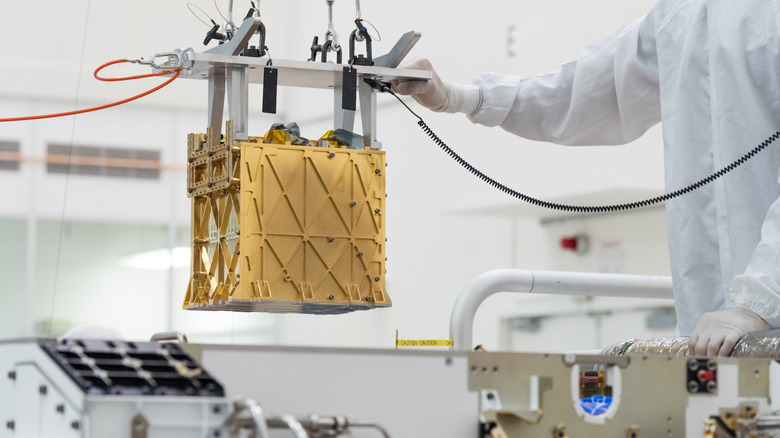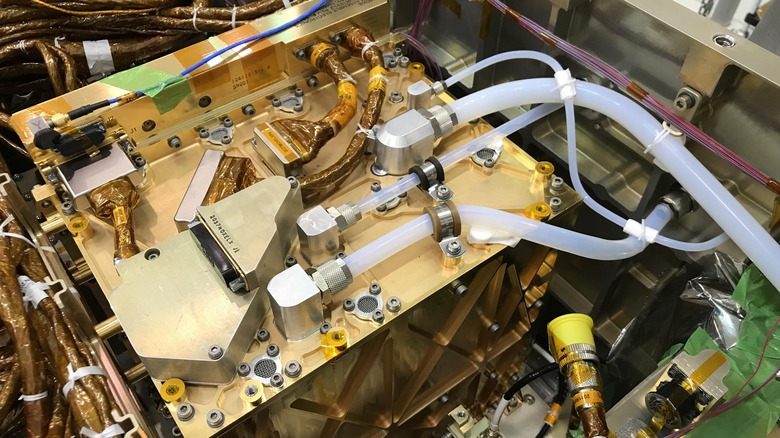How This Small Machine Has Made Oxygen On Mars For The First Time
The Perseverance rover, currently exploring Mars, isn't just performing scientific analyses and collecting samples. It also carries a small machine on board that could change the future of Mars exploration and even enable humans to eventually visit the planet. The machine, called the Mars Oxygen In-Situ Resource Utilization Experiment or MOXIE, is designed to make oxygen from carbon dioxide.
Oxygen on Mars is rare, making up less than 0.2% of the atmosphere. And oxygen is extremely important for future missions to Mars, not only for humans to breathe but also for planned rockets to take off from the planet's surface. NASA's Mars Sample Return mission plans to launch a rocket from Mars for the first time, but there's a challenge. A rocket doesn't only need fuel to launch — it also needs an oxidizer to enable that fuel to burn. On Earth, there's plenty of oxygen in the atmosphere to act as an oxidizer. But on Mars, we'll need to find a way to make oxygen in order to launch rockets as well as for humans to visit there.
To achieve this, NASA and other space agencies are trying out an approach called in-situ resource utilization, which means using what is available on Mars to make what we need. MOXIE will take Martian carbon dioxide and turn it into oxygen.
In a recently published article in the journal Science Advances, the scientists and engineers behind MOXIE explained how it's been working since the Perseverance rover arrived on Mars in February 2021.
A historic achievement
The researchers shared that MOXIE has worked as hoped over seven experimental runs, and has managed to produce oxygen both during the day and at night, and in different Martian seasons. The machine produced around six grams of oxygen per hour, meeting its goals and proving that making oxygen on Mars is possible.
"This is the first demonstration of actually using resources on the surface of another planetary body, and transforming them chemically into something that would be useful for a human mission," said Jeffrey Hoffman of the Massachusetts Institute of Technology. "It's historic in that sense."
Tthe MOXIE device on Perseverance produces only a relatively small amount of oxygen. If the device were to be scaled up, it could produce much more oxygen for future missions to use.
The current version is also designed to only operate occasionally, as there is a very strict limit on how much power any device on a rover can use. A larger version of the technology could run continuously, making oxygen all the time.
MOXIE works like a fuel cell run backwards — instead of using carbon monoxide and an oxidizer to produce carbon dioxide and electricity, you put in carbon dioxide and electricity and you get out oxygen and carbon monoxide.
The researchers will continue periodically running MOXIE to learn more about it, and to see if it can produce more oxygen during the spring season which has high atmospheric density and higher rates of carbon dioxide in the atmosphere.

